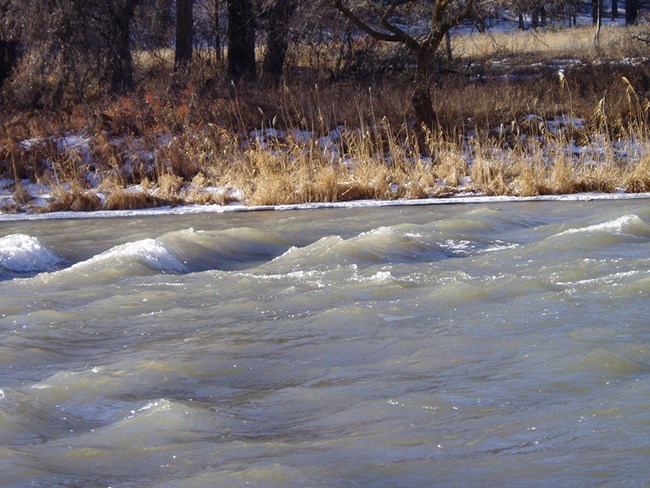
NPS photo The Niobrara is not characteristic of most Great Plains Rivers, simply flowing over and around obstacles. Instead, it exhibits a pattern called “surge flow” where periodic surges (or bores) move along the water surface, eventually forming a cresting or surf-like breaking wave before receding again. At times these waves can reach heights of three feet or more!
Visit our keyboard shortcuts docs for details
The rare phenomenon known as surge flow appears almost as standing waves, especially in the winter on the Niobrara National Scenic River. |
Last updated: January 2, 2018
